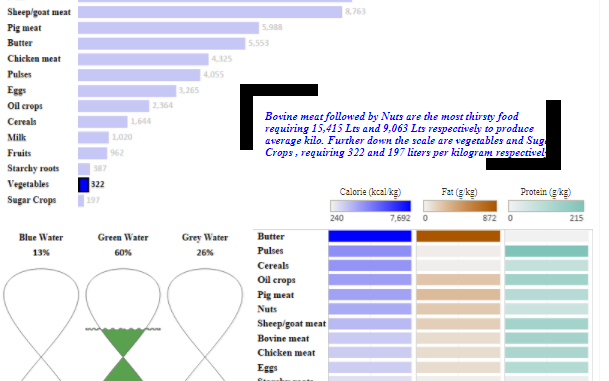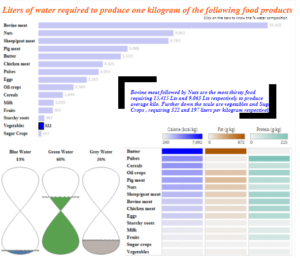
This week makeover Monday was about the water footprints in our food.
Everyone knows what carbon footprint is , but do we know what is water footprint. Water footprint of any food item represents the amount of water required to produce one kg of a that food item.
The water footprint allows us to answer a broad range of questions for companies, governments and individuals. For example:
- where is the water dependence in my company’s operations or supply chain?
- how well are regulations protecting our water resources?
- how secure are our food or energy supplies?
- can I do something to reduce my own water footprint and help us manage water for both people and nature?
The three water footprints:
Green water footprint is water from precipitation that is stored in the root zone of the soil and evaporated, transpired or incorporated by plants. It is particularly relevant for agricultural, horticultural and forestry products.
Blue water footprint is water that has been sourced from surface or groundwater resources and is either evaporated, incorporated into a product or taken from one body of water and returned to another, or returned at a different time. Irrigated agriculture, industry and domestic water use can each have a blue water footprint.
Grey water footprint is the amount of fresh water required to assimilate pollutants to meet specific water quality standards. The grey water footprint considers point-source pollution discharged to a freshwater resource directly through a pipe or indirectly through runoff or leaching from the soil, impervious surfaces, or other diffuse sources
The info graphic below shows the Water footprint of the most common food items that we consume, The Hourglass depicts the percentage of Green, Blue and Grey water in the food item.

Check out the visualisation at: Water Footprints.
Select the bars and the hourglass will update according to the percentage of Blue ,Green and Grey water .
